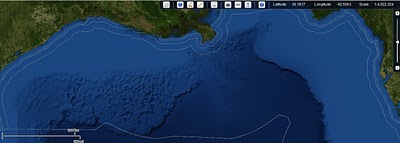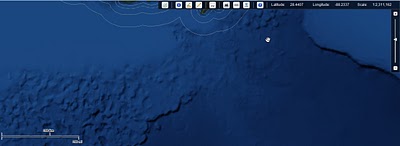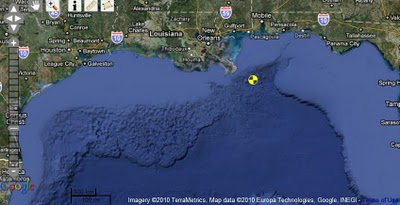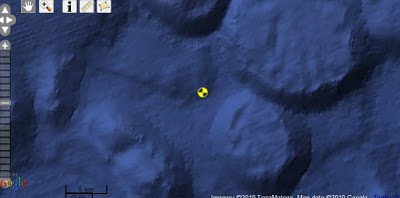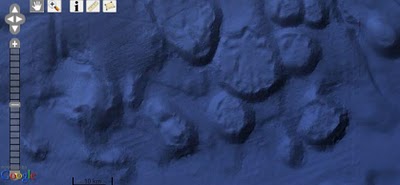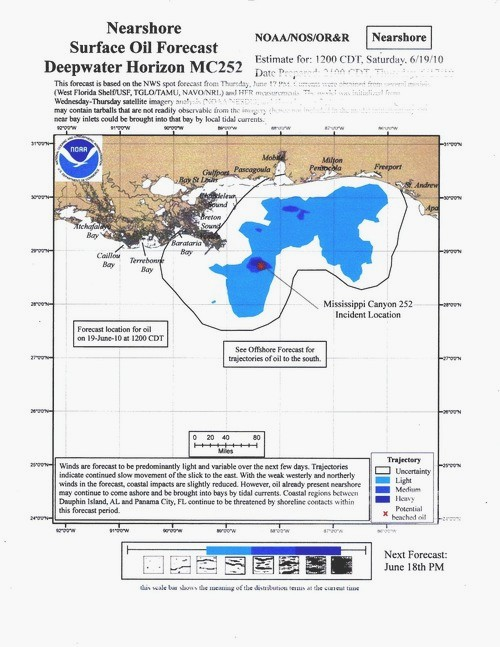On the gargantuan lie of climate change science
 An incisive critique of the dominant climate change science narrative.
An incisive critique of the dominant climate change science narrative.
By Denis G. Rancourt -Activist Teacher
In all of human history, what was believed and promoted by the majority of service intellectuals (high priests) in each civilization was only created and maintained to support the hierarchy and the place of the high priests within the hierarchy. To believe that the present is any different regarding any issue managed by our “experts”, whether in medicine, psychology, cosmology, economics, law and governance, population health or ecology, is pure distilled idiocy.
Never mind that the whole climate change scam is now driven by the top-level financiers newly eyeing a multi-trillion-dollar paper economy of carbon trading and that this is the reason it’s now a dominant mainstream media and corporate messaging presence [1].
Never mind that this paper economy of carbon trading will be the largest financial extortion enterprise since the invention of the US-centered military-backed global finance structure of predation itself.
Never mind that establishment scientists are service intellectuals who virtually never diverge from supporting power, who at best look for sanitized and hypothetical “problems” that do not threaten hierarchy and who feed their false self-image of relevance [2][3].
Never mind also the pathetic recent historical record of science with regard to identifying or solving public health and environmental problems [4][5][6].
Never mind all that. Take the red pill by considering the climate “science” fairy tale itself and examine its story elements.
Here goes, in five story-element steps.
Step-1: Combustion of fossil fuels produces CO2
These fairy tales always start with some basic science or empirical truism. In this case: Burning fossil fuel produces CO2 gas. Yup the combustion reaction can, for simplicity, be represented as the inverse of the photosynthesis reaction as:
COH2 + O2 = H2O + CO2 + energy,
just like breathing, or a similar reaction for more of a hydro-carbon where each C atom in the fuel gives rise to one CO2 molecule in the product gas.
Step-2: This large amount of CO2 from fossil fuel burning goes into the atmosphere
OK, now believers next want to say that the CO2 from fossil fuel burning is a large amount and that it goes into the planet’s atmosphere. Already in Step-2 there are some pesky conceptual and empirical difficulties, as follows.
First of all, the global industrial-age historic amount of fossil fuel burned to date is a known amount. The post-industrial extra CO2 contained in the planet’s atmosphere is also a known amount. (These numbers are, for example, given here: [7].) But the post-industrial CO2 in the atmosphere is half of the amount that would have resulted from the industrial burning (and its measured temporal evolution function does not follow or match the known temporal evolution of historic post-industrial fossil fuel burning).
This is not some small difference due to measurement errors. It is a factor of two difference. This should give some pause to even the most fervent believers: Half of all the historic fossil fuel burning is unaccounted for.
The atmosphere is not a receptacle that is filled but rather one compartment of many in a planetary system of carbon transport and exchanges. Is it a large receptacle? Are there much larger and active exchangeable carbon receptacles on the planet? Is the rate of input of carbon into the atmosphere from fossil fuel burning large compared to other rates of atmospheric carbon inputs and outputs?
After all, something is only large (or small) compared to a relevant something else. We are talking about planetary processes.
And there are two types of measures: (1) The rates (or fluxes) of carbon in and out of each given planetary compartment such as the atmosphere (measured in number of carbon atoms per year, C/y, say) and (2) the quantities of carbon at a given time in the planetary compartments for exchangeable carbon (or carbon pools) (measured in number of carbon atoms, C, say; or tons of CO2 equivalent, or whatever).
Regarding the rates, consider this. The present (2010) global rate of CO2 production from fossil fuel burning is approximately equal to the present global rate of CO2 production from anthropogenic animal breathing [8].
This implies that reducing anthropogenic animal metabolic rates can have a greater effect than many industry-scale changes in energy use and leads to suggestions that we breathe less [9]. It also shows that demonizing CO2 production demonizes life itself [9].
Among other things, the anthropogenic animal breathing calculation [8] also means that the rate of loss of carbon from the atmosphere is at least four times greater than the rate of measured post-industrial increase in atmospheric CO2.
Where is all that atmospheric carbon going? We don’t know because the other planetary carbon pools with which the atmosphere exchanges are so large (compared to the atmosphere) that the incremental additions of carbon to these larger pools (such as the oceans) cannot be detected.
Again regarding rates, the present (2010) historic maximum of anthropogenic (caused by humans) fossil fuel burning is only 8% or so of global primary production (GPP) (both expressed as kilograms of carbon per year, kg-C/y) [7]. GPP is the rate at which new biomass (living matter) is produced on the whole planet.
Similarly, the rate of fossil fuel burning energy release is miniscule (0.006%) compared to the rate of the sun’s delivery of energy to the planet [7].
And in terms of quantities, how large is the total historic atmospheric stash of post-industrial CO2? Here is an answer [7]:
“[T]he present planetary biomass alone (1 x 10^15 kg-C) is approximately three times the amount of total post-industrialization fossil fuel burned to date where even this biomass carbon is only carbon in living organisms.
In addition there is at least 10 times more carbon contained in non-living organic matter than in biomass – in organic detritus, soils, bogs, natural waters, lake sediments, marine sediments, and so on. For example, from my own research, the boreal forest (the largest ecosystem on Earth) contains millions of lakes that have not even been counted. These virtually unstudied lakes have accumulated organic-rich bottom sediments (preserved by anoxia) that have not yet been included in global carbon accounting studies.
Furthermore, there is approximately fifty times more dissolved carbon in ocean water than contained as CO2 in the atmosphere.
These bio-available carbon pools (biomass, organic matter, atmosphere, ocean water) do not include geological stores and sources from volcanoes and active geothermal sites. Volcanic activity, in particular, is unpredictable and has been highly variable in intensity since life burst onto the planet (billions of year ago), with often dramatic impacts on global ecology.
In summary, the total amount of post-industrial fossil fuel burned to date (and expressed as kilograms of carbon) represents less than 1% of the global bio-available carbon pools.
More importantly, bio-available carbon is a minor constituent of the Earth’s surface environment and one that is readily buffered and exchanged between compartments without significant consequences to the diversity and quantity of life on the planet. The known history of life on Earth (over the last billions of years) is unambiguous on this point.”
Environmental scientists working from the CO2 climate hypothesis want post-industrial atmospheric CO2 to be large for the same reason they want their penises to be large. The question is: Compared to what? Next, we need to remind them that CO2 is a trace constituent of the atmosphere.
Step-3: Post-industrial atmospheric CO2 produces an increased planetary greenhouse effect
Here believer scientists, when they dare pull their heads from their asses, are going to have to actually contend with two problems: (1) CO2 is a trace constituent of the atmosphere which alone can have no significant effect on climate and (2) the physical correctness of a posited planetary greenhouse effect (on a planet with a greenhouse-effect-gas-bearing atmosphere) is not established and is hotly debated by planetary physicists.
Start with the latter point, which makes the former point irrelevant.
A planetary atmosphere is not a pane of glass which is transparent to visible light and blocks infrared light. There is no greenhouse. (Note also that the dominant physical mechanism for the traditional greenhouse effect is itself in question [10].)
A so-called “greenhouse effect gas” is a gas whose molecules resonantly scatter infrared light in all directions, all directions. This gas is not located in a discrete layer (like a pane of glass) but is distributed throughout the thickness of the atmosphere. You can see how that gets complicated because downward radiation can be re-scattered upwards; the atmosphere itself emits radiations; etc.; such that calculating the resulting mean surface temperature at a given altitude is a non-trivial problem.
The present (virulent) theoretical physics debate about whether a physical mechanism for a planetary greenhouse effect exists is illustrated by these articles: [11], [12], [13], [14].
In simple terms, the atmosphere can be considered part of the “surface” of the planet and the only parameters that physically determine the resulting “surface” temperature of the planet in steady state are the “surface” albedo (i.e., the fraction of incident electromagnetic radiation reflected by the surface) and the solar constant (i.e., the intensity of electromagnetic radiation from the planet’s sun). So it is not too surprising that this debate would occur.
Geophysicists have always correctly assumed that solar constant and planet albedo were the key parameters over the course of Earth’s climate history. This greenhouse thing is a tentative blip in geophysical conceptualization. If you want to predict planetary mean surface temperature and even regional climates on a planet better look at solar radiation input variations and large-area changes in surface albedo. The latter can arise from changes in agricultural practices, land use, particulate deposition on snow and ice, insect infestations, etc. [2]
However, regarding CO2 as a greenhouse effect gas, even if we use the (incorrect) planetary greenhouse effect equations of the climate models, the post-industrial amount of atmospheric CO2 (as a trace quantity) does not alone have a predicted significant climate effect.
The believer modellers need to “amplify” the effect of CO2 in their models.
This is conveniently achieved by the so-called “amplification hypothesis” whereby, in the absence of any justifying empirical evidence, the modellers simply amplify the amount of greenhouse effect gas using a multiplicative factor applied to the concentration of CO2. The factor is simply chosen “to make it work”.
This arbitrary adjustment is rationalized as follows. The main greenhouse effect gas in Earth’s atmosphere is water vapour. The “logic” is that a small increase in CO2 would cause a small increase in temperature which in turn would cause more vaporization of water thereby resulting in more atmospheric water vapour causing more greenhouse warming – ta-da… a “positive feedback” to give us the needed leverage to affect our climate model predictions. (All current climate models require this machination.)
There are three main problems with this amplification hypothesis. First, there is no empirical support or experimental verification for it. Global average atmospheric water vapour concentration is impossible to measure because water constantly changes phase (vapour, liquid, ice) and is distributed inhomogeneously (vapour, rain, snow, clouds, fog, surface condensation/sublimation/vaporisation, etc.).
Second, there are innumerable hypothetical mechanisms whereby any feedback between CO2 and water vapour could be negative rather than positive and no practical way to evaluate most of these possible mechanisms. For example, just to name one, an increase in CO2 could change the plant ecology in such a way as to reduce evaporation from plants. One could sit and invent hundreds of such plausible scenarios (all equally irrelevant with respect to global climate).
Thirdly, it is likely that there are other negative (or positive?) also negligible climate feedbacks with CO2 that do not depend on coupling with water vapour. CO2 can be a growth limiting plant nutrient such that its impact on albedo might produce greater climate leverage than any greenhouse effect gas coupling could ever achieve?
In summary, as I showed in 2007 [2]: “There is of course much more wrong with state-of-the-art global circulation models (climate models) than the assumption and implementation of CO2-H2O feedback. Although these models are among the most elaborate predictive models of complex non-linear phenomena, they are nonetheless sweeping oversimplifications of the global climate system and its mechanistic intricacies.”
Overall, therefore, there is no established reason to believe that CO2 could be a climate driver and many reasons to conclude that, although CO2 may often follow or correlate with climate indicators [2], climate drivers are related to solar irradiance and albedo and have nothing to do with CO2.
Step-4: The increased planetary greenhouse effect causes planetary warming
So, if despite all the carbon pools and inter-pool fluxes on the planet we (a) accept that the increasing atmospheric CO2 concentration is due to fossil fuel burning, (b) believe that the concept of a planetary greenhouse effect is physically justified, and (c) believe that CO2 as a trace gas in the atmosphere can impact climate via the invented but-some-believe-justified amplification hypothesis, then we must next look for planetary warming (or some other global climate effect?) that can be attributed to increasing CO2.
Note that, given the above discussion, a plausible alternative to even point-a is that the increase in atmospheric CO2 is a response to some global or solar-system change(s) that affect carbon fluxes – rather than arising from a simplistic addition from fossil fuel burning. That is, that trace atmospheric CO2 “follows” rather than “drives” (e.g., [2][15][16]).
Never mind! Let’s just look for warming.
Now at this stage it gets really difficult for the believer scientists. They must contend both with the largest scientific data hording and data manipulating scandal since Newton (Climategate, [17]) and the fact that the mathematical statisticians have shown that a global (space-and-time-) average temperature from (space-and-time-) discrete measurements of temperature is “ill-posed” (i.e., cannot be reliably evaluated) [2][18].
Mathematical statistics experts Essex et al. put it this way in their 2007 abstract [18]:
“Physical, mathematical, and observational grounds are employed to show that there is no physically meaningful global temperature for the Earth in the context of the issue of global warming. While it is always possible to construct statistics for any given set of local temperature data, an infinite range of such statistics is mathematically permissible if physical principles provide no explicit basis for choosing among them. Distinct and equally valid statistical rules can and do show opposite trends when applied to the results of computations from physical models and real data in the atmosphere. A given temperature field can be interpreted as both “warming” and “cooling” simultaneously, making the concept of warming in the context of the issue of global warming physically ill-posed.”
In addition, analytic forecasting experts assessed the Intergovernmental Panel on Climate Change’s (IPCC) Working Group One (WG1) 2007 Report and found that [19]:
“The forecasting procedures that were described violated 72 [established forecasting] principles. Many of the violations were, by themselves, critical. The forecasts in the Report were not the outcome of scientific procedures. In effect, they were the opinions of scientists transformed by mathematics and obscured by complex writing. Research on forecasting has shown that experts’ predictions are not useful in situations involving uncertainly and complexity. We have been unable to identify any scientific forecasts of global warming. Claims that the Earth will get warmer have no more credence than saying that it will get colder.”
This all occurred after the ludicrous “hottest year in the hottest decade of the last thousand years” madness of the 1990s, now politely referred to as the “hockey stick controversy” [20]. And recently Climategate has conclusively settled the latter controversy [17]: The hockey stick was a sham even allowing for statistical ignorance regarding the instrumental temperature record.
In addition, it is stunning to note the almost total disregard for proper error propagation and sensitivity analysis that was the norm in climate science (both with the modellers and those reporting proxy and instrumental data) into the beginnings of the 2000s. This is true to the point that the first tentative reports of error and sensitivity analysis on the models were considered top-rate scientific news for the elite journals
Science and
Nature (e.g., [21][22][23][24]) – as though scientists had just discovered reliability evaluation!
Several papers then questioned the further practical difficulty of correctly quantifying true prediction uncertainties given that all the contending climate models make virtually the same model assumptions (e.g., [25]) – as though that were a surprise.
These were fatal blows (mean global temperature not defined and cannot be measured or predicted) that did not even require that the previously debated and arguably insurmountable difficulties of measuring a given temperature (instrumentally or by proxy) be addressed (see [2] for discussion).
These are the reasons that “global warming” became “climate change”. Model extractions and empirical evaluations of a mean global temperature were shown to be hog wash.
Something other than “warming” was now needed to save the field.
Step-5: Climate chaos and melting glaciers
In the final stage before its mental environment death, and as the financiers and their minions implement carbon trading, it’s really a circus. We pull climate chaos out of the non-linear physics hat and every weather event and habitat destruction observation on the planet becomes evidence for climate change.
Now melting glaciers are melting from temperature increases that cannot be measured, islands and shorelines will be flooded, tropical storms, hot winters, cold winters, cold summers, hot summers, heavy rains, droughts… it’s all climate change.
The modellers are relevant again, showing predicted regional climate changes “forced” by CO2, on their colour-coded computer maps…
The only problems are a few pesky scientists from “outside the field” (i.e., whose careers are not tied to computer climate models), like statistical climatologists, field geologists, radiation experts, and the like.
These pesky outsiders point out alternative mechanisms for glacier melting [2], question satellite image interpretations, show that weather events are within statistical norms (e.g., [26][27][28][29]) and generally misbehave.
Maybe the modellers are not aware of it, but significant regional climate changes have been around since well before the industrial period and have been documented (in proxy, sedimentary and sequential records) to have occurred on the decadal and centennial time scales for at least one thousand years towards the last ice age (e.g., [2]).
Conclusion
Climate change “science” is part of just another screw-the-brown-people scam [2]:
“Environmental scientists and government agencies get funding to study and monitor problems that do not threaten corporate and financial interests. It is therefore no surprise that they would attack continental-scale devastation from resource extraction via the CO2 back door. The main drawback with this strategy is that you cannot control a hungry monster by asking it not to shit as much. … All in all, the best way to not pollute and destroy the environment is to not pollute and destroy the environment. The best way to not exploit others is to not exploit others.”
Or is the societal goal to use the fabricated sanitized problem of CO2 in order to mask the real problems and to shield us from our responsibilities as influential First Worlders? – So as to not see our obvious responsibilities to ourselves and to others [2]:
“It’s about exploitation, oppression, racism, power, and greed. Economic, human, and animal justice brings economic sustainability which in turn is always based on renewable practices. Recognizing the basic rights of native people automatically moderates resource extraction and preserves natural habitats. Not permitting imperialist wars and interventions automatically quenches nation-scale exploitation. True democratic control over monetary policy goes a long way in removing debt-based extortion.”
The climate change scam fits into a now common pattern of public manipulation [5]; that works well on a public which benefits from being manipulated.
Endnotes
[1] David F. Noble. “The Corporate Climate Coup”.
http://activistteacher.blogspot.com/2007/05/dgr-in-my-article-entitled-global.html
[2] Denis G. Rancourt. “Global Warming: Truth or Dare?” (And see the many “Selected Supporting References” section.)
http://activistteacher.blogspot.com/2007/02/global-warming-truth-or-dare.html
[3] David F. Noble. “Regression on the Left”.
http://climateguy.blogspot.com/2007/05/regression-on-left.html
[4] Aaron Wildavsky. “But is it true? A citizen’s guide to environmental health and safety issues”. Harvard University Press. 1995.
[5] Denis G. Rancourt. “Some big lies of science”.
http://activistteacher.blogspot.com/2010/06/some-big-lies-of-science.html
[6] Denis G. Rancourt. “On the False Science of a Fundamental Basis for Progress”.
http://activistteacher.blogspot.com/2011/01/on-false-science-of-fundamental-basis.html
[7] Denis G. Rancourt. “Is the burning of fossil fuel a significant planetary activity?”
http://activistteacher.blogspot.com/2010/08/is-burning-of-fossil-fuel-significant.html
[8] Denis G. Rancourt. “CO2 emission from fossil fuel burning is not more than from breathing”.
http://activistteacher.blogspot.com/2010/08/co2-emission-from-fossil-fuel-burning.html
[9] David F. Noble and Denis G. Rancourt. “Taking CO2 seriously”.
http://climateguy.blogspot.com/2007/05/taking-co2-seriously.html
[10] A. Neil Hutton. Climate Change. (see Chap.IV: The Greenhouse Effect.) Originally published as a ten-part series in the Canadian Society of Petroleum Geologists’ monthly magazine, The Reservoir, between January and November 2009.
http://friendsofginandtonic.org/page1/assets/hutton%20-%20climate%20change.pdf
[11] “Falsification Of the atmospheric CO2 greenhouse effects within the frame Of Physics” by Gerhard Gerlich and Ralf D. Tscheuschner; International Journal of Modern Physics B, Vol. 23, No. 3 (2009) pages 275-364.
http://arxiv.org/PS_cache/arxiv/pdf/0707/0707.1161v4.pdf
[12] “Proof of the atmospheric greenhouse effect” by Arthur P. Smith; arXiv:0802.4324v1 [physics.ao-ph]
http://arxiv.org/PS_cache/arxiv/pdf/0802/0802.4324v1.pdf
[13] “Comments on the “Proof of the atmospheric greenhouse effect” by Arthur P. Smith” by Gerhard Kramm, Ralph Dlugi, and Michael Zelger; arXiv:0904.2767v3 [physics.ao-ph]
http://arxiv.org/ftp/arxiv/papers/0904/0904.2767.pdf
[14] “Reply to ‘Comment on ‘Falsification Of the atmospheric CO2 greenhouse effects within the frame Of Physics’ by Joshua B. Halpern, Chistopher M. Colose, Chris Ho-Stuart, Joel D. Shore, Arthur P. Smith, Jorg Zimmermann” by Gerhard Gerlich and Ralf D. Tscheuschner, International Journal of Modern Physics B, Vol. 24, No. 10 (2010) pages 1333–1359.
http://www.skyfall.fr/wp-content/gerlich-reply-to-halpern.pdf
[15] Veizer, J, Godderis, Y, François, LM. 2000. “Evidence for decoupling of atmospheric CO2 and global climate during the phanerozoic eon”. Nature 408 (2000) pages 698-701.
http://www.nature.com/nature/journal/v408/n6813/abs/408698a0.html
[16] Caillon, N, Severinghaus, JP, Jouzel, J, Barnola, J-M, Kang, J, Lipenkov, VY. “Timing of atomospheric CO2 and Antarctic temperature changes across termination III.” Science 299 (2003) pages 1728-1731.
http://www.sciencemag.org/content/299/5613/1728.short
[17] Google “Climategate”. And, for example, THESE POSTS on ClimateGuy.
http://climateguy.blogspot.com/search/label/Climategate
Also, THIS VIDEO is hilarious.
http://www.youtube.com/watch?v=fAlMomLvu_4&feature=player_embedded#at=16
[18] Christopher Essex, Ross McKitrick, Bjarne Andresen. “Does a Global Temperature Exist?” Journal of Non-Equilibrium Thermodynamics, Feb 2007, Vol.32, No.1, pages 1-27.
http://www.reference-global.com/doi/abs/10.1515/JNETDY.2007.001
https://www.cfa.harvard.edu/~wsoon/ArmstrongGreenSoon08-Anatomy-d/EssexMcKitrickAndresen07-globalT_JNET2007.pdf
[19] Kesten C. Green, J. Scott Armstrong. Global Warming: Forecasts by Scientists Versus Scientific Forecasts. Energy & Environment, Volume 18, Number 7 – 8 / December 2007, pages 997-1021.
http://multi-science.metapress.com/content/cx27431844018158/
[20] Hockey Stick Controversy.
http://en.wikipedia.org/wiki/Hockey_stick_controversy
[21] Caldeira, K, Jain, AK, Hoffert, MI. 2003. Climate sensitivity uncertainty and the need for energy without CO2 emission. Science 299: 2052-54
http://www.sciencemag.org/content/299/5615/2052.short
[22] Murphy, JM, Sexton, DMH, Barnett, DN, Jones, GS, Webb, MJ et al. 2004. Quantification of modelling uncertainties in a large ensemble of climate change simulations. Nature 430: 768-72
http://www.nature.com/nature/journal/v430/n7001/abs/nature02771.html
[23] Stainforth, DA, Alna, T, Christensen, C, Collins, M, Pauli, N et al. 2005. Uncertainty in preditions of the climate response to rising levels of greenhouse gases. Nature 433: 403-06
http://www.nature.com/nature/journal/v433/n7024/abs/nature03301.html
[24] Gerard H. Roe, Marcia B. Baker. Why Is Climate Sensitivity So Unpredictable? Science, 2007, Vol.318, No. 5850, pages 629-632.
http://www.sciencemag.org/content/318/5850/629.short
[25] Mikyoung Jun, Reto Knutti, Douglas W Nychka. Spatial Analysis to Quantify Numerical Model Bias and Dependence. Journal of the American Statistical Association. September 1, 2008, 103(483): 934-947. doi:10.1198/016214507000001265.
http://pubs.amstat.org/doi/abs/10.1198/016214507000001265?journalCode=jasa
[26] Balling Jr, RC, Cerveny, RS. 2003. Compilation and discussion of trends in severe storms in the United States: Popular perception v. climate reality. Natural Hazards 29: 103-12
[27] Changnon, SA. 2003. Shifting economic impacts from weather extremes in the United States: A result of societal changes, not global warming. Natural Hazards 29: 273-90
[28] Mudelsee, M, Börngen, M, Tetziaff, G, Grünewald, U. 2003. No upward trends in the occurrence of extreme floods in central Europe. Nature 425: 166-69
[29] Kevin Trenberth. Uncertainty in Hurricanes and Global Warming. Science 308 (2005) 1753-1754.
http://www.sciencemag.org/content/308/5729/1753.short
Addendum
The climate science lie is so large that one has to expect many considered objections from independent thinkers. Here are some examples:



